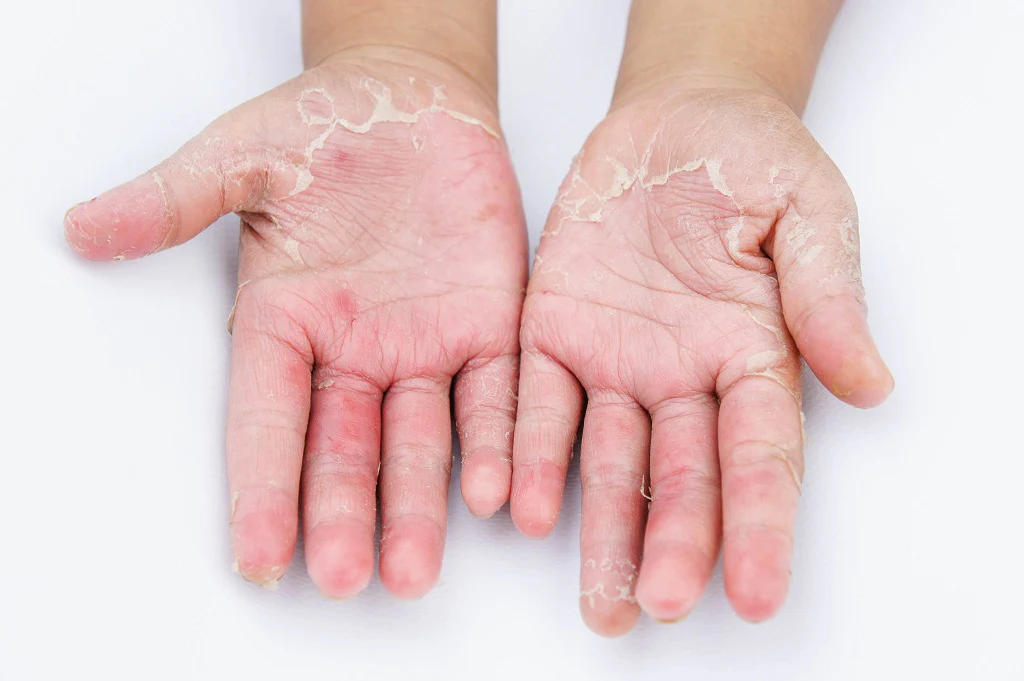Fungi are everywhere, they live in the soil, plants, air and even inside our bodies. Unfortunately, they can cause fungal infections such as ringworm, jock itch and yeast infections.
Fortunately, there are several herbs that have antifungal properties. They include juglans nigra, goldenseal, garlic and oregano oil. These herbal treatments have the advantage of lower toxicity and less side effects than synthetic medications.
Tea Tree Oil
Fungi are microscopic organisms that can cause infections. They live in the air, soil and water and also in plants. Fungi can also infect humans. One of the most common types of fungal infections is ringworm.
This infection causes a red, itchy rash that has a worm-like appearance and occurs on the skin and scalp. Studies have found that tea tree oil can help kill fungus. It can also help reduce ringworm itching.
Tea tree oil is made from the leaves of a plant called Melaleuca alternifolia. The oil was first used by indigenous Australians to treat wounds and burns. The oil has many germ-fighting properties and can be used to treat a variety of conditions including nail fungus.
One study found that when applied to the skin, tea tree oil was effective in treating nail fungus. However, this was a small study and further research is needed to confirm these results. Another study found that a mixture of tea tree oil and olive oil reduced fungus in the nails of people with nail fungus. The oil also helped prevent the fungus from spreading to other toenails.
When applying essential oils to the skin, it is important to dilute them with a carrier oil. This helps to reduce the risk of side effects and allows the oil to penetrate the skin more effectively. A good carrier oil to use is coconut oil.
It is best to apply the diluted mixture on the affected area twice a day. It is also important to keep the affected area as dry as possible. If you notice any signs of an allergic reaction, discontinue use and speak to a doctor.

Garlic
Garlic is one of the most powerful antifungal herbs available. It can help with many types of fungal infections, including ringworm and yeast infections. It works by attacking the fungus directly. It also helps the body get rid of the fungus by strengthening the immune system.
Garlic has been used for thousands of years in traditional medicine to treat infections. It has been found to be effective against a variety of ailments, including respiratory and digestive problems. It can be used topically or taken internally. It is recommended to use it in conjunction with other natural antifungals.
The active ingredient in garlic that has the strongest antifungal effect is allicin. It is released when the alliin in garlic is acted upon by the phospho-pyridoxal enzyme alliinase. It takes about 15 minutes for the allicin to fully activate and begin killing fungus cells. It has been shown to kill both planktonic and sessile forms of Candida albicans. It also inhibits the growth of Aspergillus niger and Fusarium, which are common molds that can cause water damage in buildings.
Allicin is able to kill fungus by entering the cell and binding to its DNA and proteins. This causes the fungus to die by interrupting cellular respiration. It is also known to destroy the fungus’s cell wall. The sulfur in garlic can interfere with the fungus’s ability to make fatty acids, which it uses for energy.
There are other herbs that are also effective against fungus, including goldenseal, elecampane, grapefruit seed extract and black walnut. Horopito (Pseudowintera colorata), a shrub from New Zealand, is another great antifungal herb. It has been shown to have strong antifungal properties and can help treat oral candida. It has been found to work by punching holes in the fungus’s membrane and stopping it from making lipids, which gives them their energy.
Oregano Oil
Unlike antibiotics, which can kill good bacteria in your body as well as bad ones, oregano oil can help protect your colon from Candida yeast overgrowth. Oregano’s main phenols, carvacrol and thymol, can pressure Candida and hinder their ability to form biofilms, adhesion, and hyphal switching (source). It also provides powerful antioxidant support by neutralizing free radicals that can damage cells.
Like any antifungal, oregano works best as part of a comprehensive plan. Try it alongside a lower-sugar, anti-inflammatory diet, probiotics to rebuild gut microbiome and complementing herbs for more sustained results. The simplest way to use oregano is in capsule form as a standardized leaf extract and in delayed-release formulations that reduce exposure in the upper GI and deliver more of its active ingredients to the intestines.
Berberine HCl, an isoquinoline alkaloid from goldenseal (Hydrastis canadensis), can also help fight fungal overgrowth. Berberine works by targeting the cell membrane of fungi, inhibiting their synthesis of the major sterol in their cells, ergosterol. This makes the membrane less fluid and more permeable, leading to a loss of internal contents including DNA and proteins, and eventual death of the fungus.
Oregano essential oil and clove EO have both been tested in vitro for their fungicidal and fungistatic effects against A. tabacinus, A. tennesseensis, and Trichoderma longibrachiatum. Oregano EO in the vapour phase was found to be one of the most fungicidal against these three tested fungi, while clove EO demonstrated only a slight fungistatic effect. Both were found to be more effective against these fungi than 70% vaporized ethanol. The fungicidal effect of both oregano and clove EO was significantly stronger than that of garlic in the same test.
Coconut Oil
While no single remedy can instantly zap skin fungus, consistent treatment with tea tree oil and other natural remedies coupled with good hygiene can speed up healing. If over-the-counter medications aren’t effective or if you have a severe infection, consult your doctor for stronger prescription treatments that may be applied topically, taken orally, or inserted as suppositories.
While many natural herbs boast antifungal properties, coconut oil may be the most powerful remedy of all. Its fatty acids create an environment that’s inhospitable to fungal growth while supporting the skin’s natural protective barrier. In one study, a team of researchers found that mice fed a diet rich in coconut oil experienced a 10-dolf drop in Candida albicans (the fungus that causes yeast infections) while also enjoying less gastrointestinal distress.
Other natural herbs with potent antifungal properties include juglans nigra, which contains an active component called juglone that’s been shown to be highly effective against candida overgrowth and other fungi. The juglone in juglans nigra acts to disrupt the formation of a fungus’s biofilm, making it less likely to thrive in the skin.
Other natural antifungal agents include turmeric, which has been shown to inhibit the growth of fungi by blocking their ability to produce glucose, which is the sugar they need for growth. In addition to using turmeric as a dietary supplement, try mixing it with warm water or coconut oil to make a paste and applying it to the infected area a few times per day.
Yogurt
Fungus is a group of microscopic organisms that usually don’t cause infections, but can when they overwhelm the body’s immune system. Fungi can invade the outer surface of your skin or nails (superficial), underneath your skin (subcutaneous) or inside your organs like your lungs, brain and heart (deep infection).
Fungal infections are caused by overgrowths of one particular type of fungus called Candida. These fungi naturally live on your body, but when your immune system is weakened they can overtake the area and cause infections. These fungi are called opportunistic, meaning they take advantage of certain conditions, like a weakened immune system, to cause infections.
Yeast infections (vaginitis) are caused by the yeast Candida albicans. These fungi can overgrow on the outer surface of your skin, nails and hair or inside your vagina. They can cause itching, burning, and a yellow discharge. This is a very common type of fungus infection.
Ringworm (dermatophytosis) is a fungal infection that can overgrow on your feet, groin and inner thighs (tinea pedis/athlete’s foot), scalp or hands (tinea cruris/jock itch), and the skin around your fingernails or toenails (tinea corporis/onychomycosis). This condition is very itchy and red, and can cause discolored and brittle nails.
Grape seed extract (GSE) is a natural antifungal agent that inhibits the growth of candida overgrowth by blocking fungal cell replication. It also works by inhibiting the conversion of pantothenic acid to coenzyme A within the cell, which interrupts cellular respiration and ultimately kills the fungus. Berberine is another natural antifungal agent that works by affecting the fungus’s ability to make energy and create a membrane by disrupting its metabolism. It also causes direct lipid peroxidation of the fungus. Berberine can be found in the herbs Oregon grape root, goldenseal and barberry.
